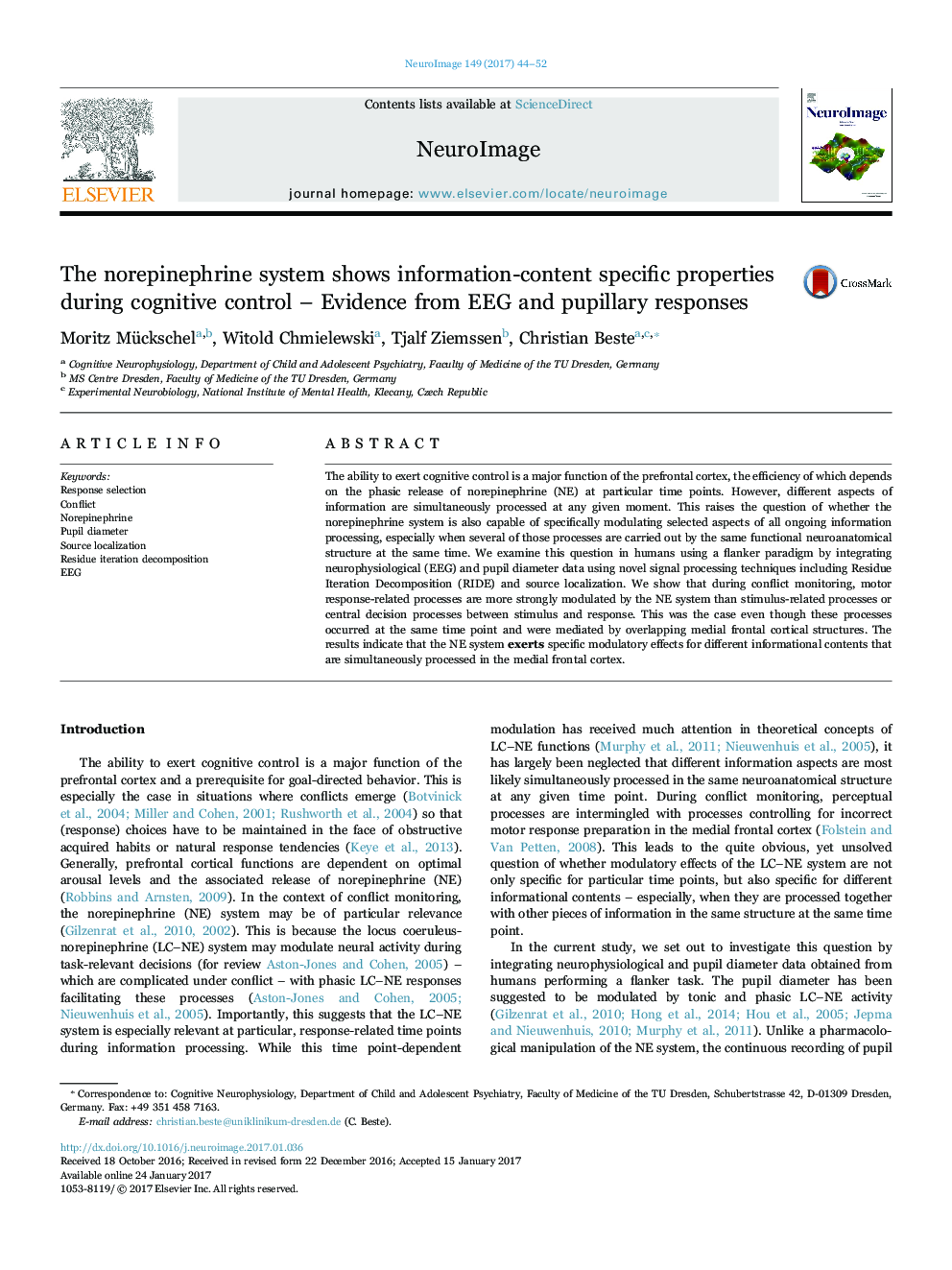| Article ID | Journal | Published Year | Pages | File Type |
|---|---|---|---|---|
| 5631233 | NeuroImage | 2017 | 9 Pages |
â¢We use a novel combination of electrophysiological techniques and methods.â¢We show that the LC-NE system does not only display a specificity in its modulatory effects of medial prefrontal processes for specific time points during information processing, but more importantly also shows specific modulatory effects for different informational contents processed simultaneously in the medial frontal cortex.â¢This is not covered in models and theoretical accounts of this neurobiological system.
The ability to exert cognitive control is a major function of the prefrontal cortex, the efficiency of which depends on the phasic release of norepinephrine (NE) at particular time points. However, different aspects of information are simultaneously processed at any given moment. This raises the question of whether the norepinephrine system is also capable of specifically modulating selected aspects of all ongoing information processing, especially when several of those processes are carried out by the same functional neuroanatomical structure at the same time. We examine this question in humans using a flanker paradigm by integrating neurophysiological (EEG) and pupil diameter data using novel signal processing techniques including Residue Iteration Decomposition (RIDE) and source localization. We show that during conflict monitoring, motor response-related processes are more strongly modulated by the NE system than stimulus-related processes or central decision processes between stimulus and response. This was the case even though these processes occurred at the same time point and were mediated by overlapping medial frontal cortical structures. The results indicate that the NE system exerts specific modulatory effects for different informational contents that are simultaneously processed in the medial frontal cortex.
